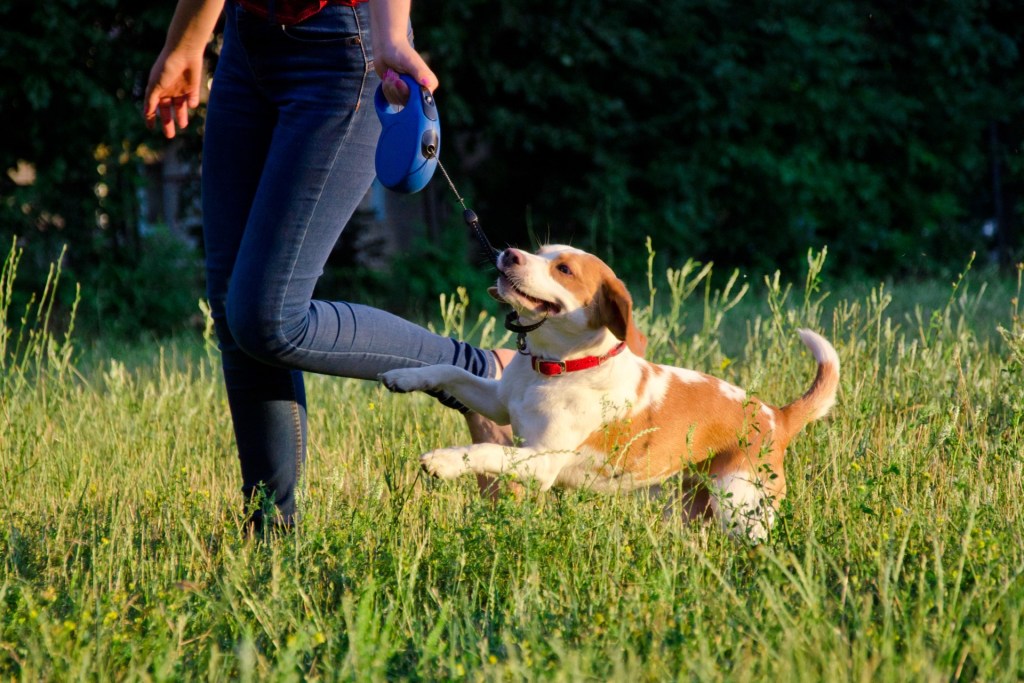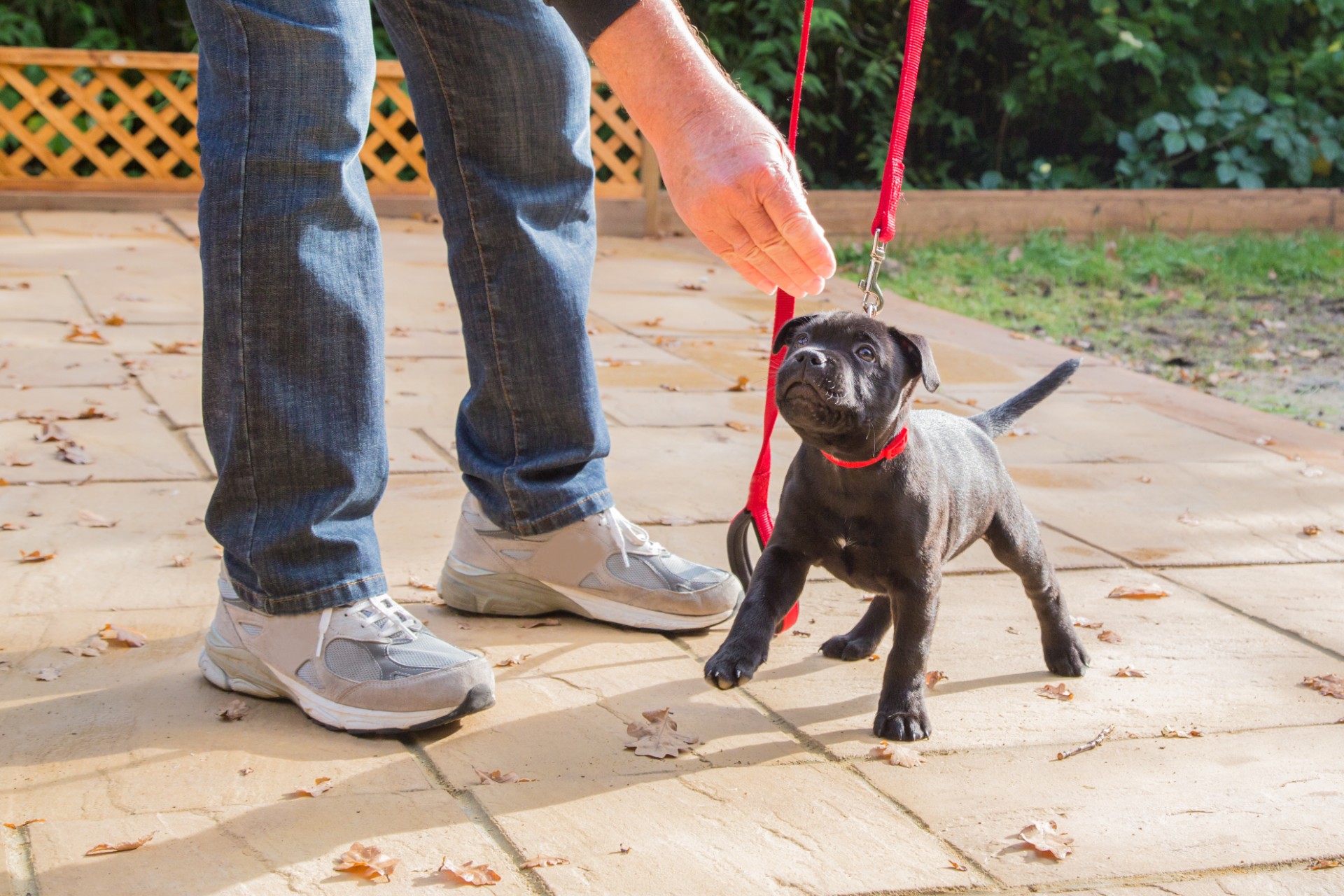A retractable leash can seem like a convenient option for curious dogs, but they aren’t as straightforward to use as you might think. More and more veterinarians are recommending skipping the retractable leash for a standard option.
You must choose the right type of dog leash that would be best for your pet and your lifestyle, but here’s what you need to know. Retractable leashes will require some expert knowledge and the right training to keep your dog safe. Let’s take a look at all the details so you can make the right choice.

Why you might rethink the retractable leash
Control is the main reason most places have leash laws, and for good reason. Even the most well-behaved dog could bolt if the feeling strikes, leaving owners to watch helplessly as they run into danger.
Regular leashes allow that control, but retractable? Not so much. The problem starts when pets and their owners have shaky leash behavior anyway. Retractable leashes are built for convenience and can make it harder to bring a dog under control.
Retractable leashes use a cord wrapped around a spring mechanism to extend and retract the leash automatically. The biggest danger is that owners never gain control of the thumb controls and can’t react quickly in a time of crisis. Other issues with retractable leashes include:
- No safety loop — Standard leashes can loop around your wrist to prevent dropping, but the handle on a retractable has no backup. It’s easier to drop a retractable leash accidentally.
- Too much space — Sure, you want to give your dog a little freedom to sniff, but some of these extend up to 26 feet. That’s too far to react quickly.
- Cords can snap — With so much tension built up, powerful dogs can snap the line and send it flying back to injure owners and bystanders.
- Neck and spine injuries — Retractable leashes allow dogs to get a running start. When the leash runs out, or owners snap it closed, it can put enormous pressure on the neck and spine.
- Potential rope burns — Owners who aren’t familiar with the leash can sometimes grab the cord instead of using the controls to stop a dog from running. The line can cause serious rope burns and lacerations.
The only appropriate time to use retractable leashes
If you frequently go hiking with your dog or spend time way out of the city, a retractable leash could be a good thing. It gives your dog the freedom to maneuver over the rocky or unsteady ground without losing footing due to leash pull.
Retractable leashes plus well-trained dogs can give your pet a measure of freedom out in the wild, allowing them the full range to sniff, walk, climb, and explore. With the right (i.e., well-behaved) dog, a retractable leash may be safer with the sheer flexibility. Your dog can walk its own path without pulling you down or vice versa.
Hiking dogs typically have excellent obedience anyway, but more and more outdoor places require dogs to be leashed. You can’t break the law just because your own dog is well-behaved. A retractable leash could be appropriate here.
How to know your dog is ready for retractable
Just going hiking with your dog isn’t a good reason to switch to retractable. Here’s how to know if your dog is ready for a retractable leash when you head out to the wild.
Your dog is leash-trained
Stop here if this just means “my dog walks on a standard leash.” Leash training teaches dogs proper form and balance, brings the concept of “heel” to the forefront, and helps dogs understand who is in control on walks.
If your dog walks beside you politely and returns to position after sniffing or exploring, this is a good sign your dog will be able to handle a retractable leash. If your dog is still pulling ahead or you’re spending a lot of time controlling the dog instead of walking, retractable isn’t the right choice.
Your dog is obedience-trained
It’s not just about leash training. Does your dog listen and respond to all commands? Does your dog know his or her name? Will your dog obey you even though there’s a tempting, juicy squirrel just over there?
Your dog must know who is in charge and have consistent obedience — excellent, flawless obedience — to make a retractable leash work. Otherwise, you might have trouble.
You have practice with retractable
It’s not all about your dog. You also must have practice, not only with managing your dog’s behavior but also the leash’s operation. Your dog responds to your own confidence, so you must spend time preparing.
The best way to do this is to test out the leash extensively in a place away from the public. Your living room or backyard is an excellent place to start. Once you’re confident in operating a retractable leash, you can try it outdoors.

Keeping a retractable leash safe
If your walks all happen in a public park, it’s best to use a regular leash for the control and safety it offers. That way, you know you’ll be able to respond quickly to any crisis, and your dog will learn proper obedience the traditional way.
Retractable leashes aren’t for most situations and can cause some problems. Take the time to work with your dog to build up the skills necessary for using a retractable leash, then take that hike out into the wild. You’ll bond and give your dog more freedom … safely.
Editors' Recommendations
- 5 surefire ways to keep your dog off your bed and get a good night’s sleep
- Taking your dog’s collar off at night: Safe move or safety risk?
- 7 dog training podcasts we’re obsessed with
- Funny dog video: Pup has an adorable reaction to a superhero pet on TV
- How hot does concrete get in the sun? The answer might shock you



